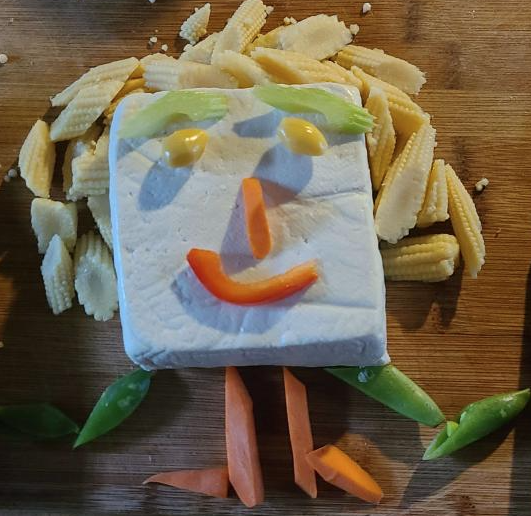Mushrooms, carrots, green pepper, cauliflower, courgette, potato (mmm double carbs), a few chickpeas thrown in as I had some in the fridge (not usually in goulash but it worked). Served with brown rice and a big dollop of Greek style oat yoghurt. Exactly what I needed now that autumn is here
As a Hungarian:
- this looks delicious
- but it certainly isn’t Hungarian style.
Goulash is a soup, if it’s a stew, it’s called pörkölt, and it’s usually served with potatoes instead of rice, and tejföl instead of yoghurt.
I do want to try your recipe though, especially the oat yoghurt feels like it would put a Mediterranean twist on it with the chickpeas.
Ah thank you for this and apologies - I was a bit suspicious about how ‘Hungarian’ the recipe truly was but that’s what it was called in the cookbook! I’d love to try some authentic recipes so if you have any that you’d like to share that would be amazing
So I stole this from a popular Hungarian recipe website:
Ingredients: 2 tbsp lard from a mangalica or goose 2 big brown onions 2 cloves of garlic 2 medium sized paprikas 2 medium size pieces of stalk celery 2 medium sized pieces of tomato 1.5 kg beef shank 3 teaspoons or more of paprika powder 2 pcs of bay leaf 2 teaspoon ground cumin 1 medium piece of celery root 2 pieces of parsnip 6 medium pieces of carrots 4 medium pieces of potatoes 1 bouquet of parsley 7 dkg flour 1 egg 4 litres of water salt and pepper to taste
- Wash, clean and cut the meat into mid-sized cubes. Wash and peel the vegetables. Grind the garlic. Cut the onion, paprika and celery stalks into medium cubes, the carrots, celery root and potatoes into smaller same sized cubes.
- Take a big pot around 7-8 litres size, and melt the lard on medium heat. Fry the onions on it. Add the garlic, paprika and celery stalks midway through. Don’t stop when it gets glassy, fry until it starts getting a bit of colour so that it will give more taste to the soup.
- Blend the stock together using a blender. Use a little of it to fry the meat seasoned with salt and pepper, so that more crust gets into the soup. After frying, put the onion mush back into the rest, so that it gives a silky-creamy texture.
- After frying the meat, season it - first add the paprika powder into the pot then stir the meat into it, then the bay leaves and cumin, a bit of water, salt and pepper to taste.
- After the water starts boiling, add the tomatoes after cutting a cross into the top and the bottom, and take them out after a few minutes, so that you can peel them. Blend with a mixer and add back as a liquid.
- If you don’t want to go to all the trouble of peeling and blending, you can add the tomatoes into the stock after cutting into cubes before adding the meat, and cook the meat in the tomato juice instead of in the water as if it was a stew.
- Let the meat cook until it gets soft, stirring it occasionally.
- In the meantime, prepare the noodles. Crack an egg into a bowl, add some slat, and stir wile adding as much flour as it can take in. Knead thoroughly, then use your hands after covering it with flour to snip small pieces on to a flour covered board. Sprinkle with flour and move it around so that it won’t stick together again. If you feel it’s too much, only use half-three quarters of it in the soup, dry the rest for later.
- After the meat gets soft, add all vegetables except the potatoes. Add around 4 litres of water so that it covers it all. We can raise the heat a little now.
- 5-6 minutes after it boils, when the vegetables are only half-soft, add the potatoes and the noodles. Stir occasionally, so that the noodles don’t stick to the pot. If all noodles float up to the top of the water, and the potatoes also got soft, take it off the heat. Check the flavours.
- Serve in bowls, season with finely cut parsley. Serve with freshly cut home-style bread, green hot peppers, Erős Pista or dried hot paprika powder for people who like spicy flavours.
I’ve translated this myself since automatic translation from complicated (and a bit accented) Hungarian is awful. When the recipe refers to parsley, it uses the roots cut into cubes earlier on then the greens for seasoning at the end. Some people like to add tejföl to taste, it is usually served without any in and people add it at the table and stir it in if they like it.
Have fun!
Edit: BTW the word goulash comes from the Hungarian gulyás, where gulya means a herd of cattle, gulyás is the herdsman. Gulyás or gulyásleves can thus be translated as “herdsman’s soup”.
This looks incredible!!! Thanks for sharing


